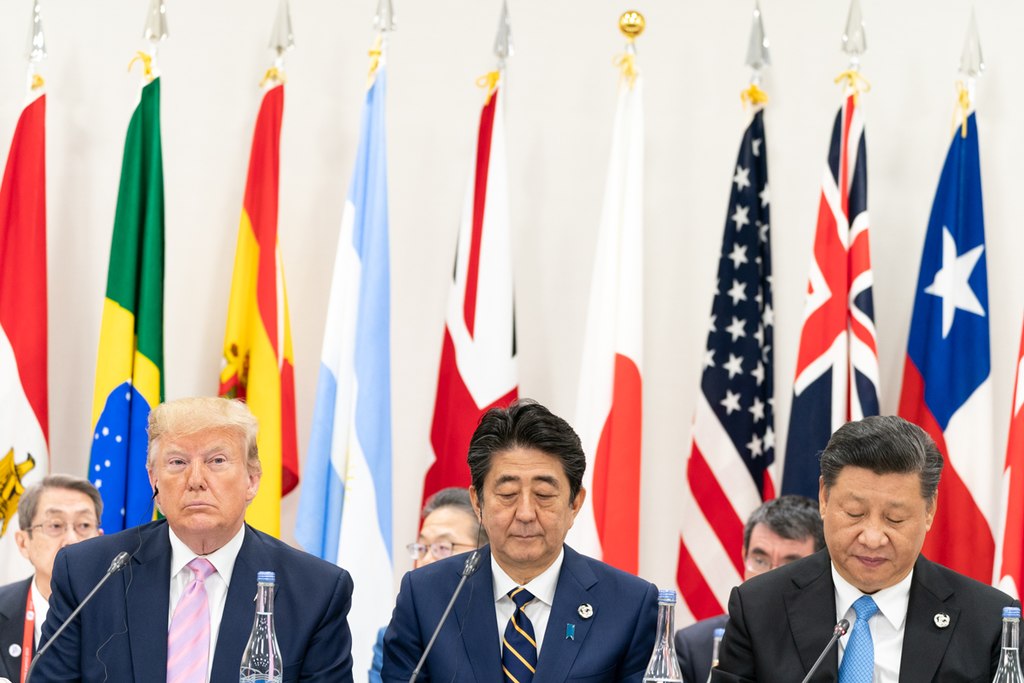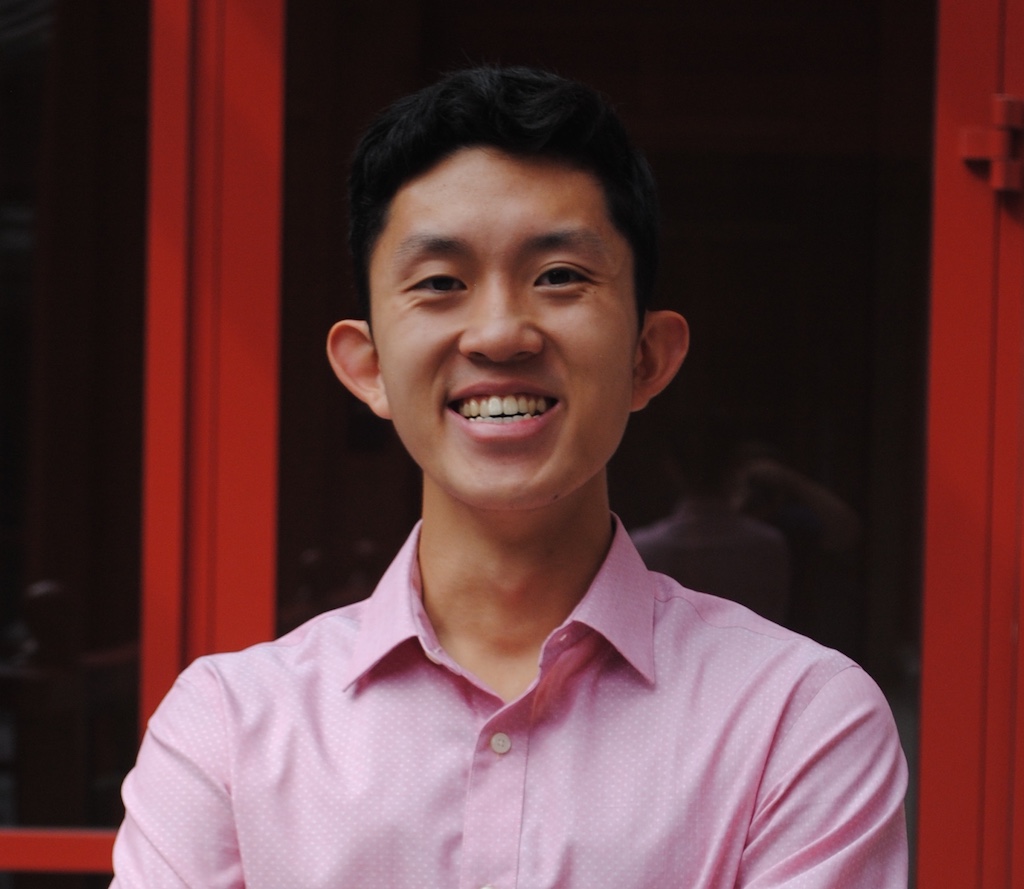Sinotech: U.S. and Chinese Negotiations Make First Direct Contact Since G-20
U.S. and Chinese Negotiators Make Contact Following the G-20 Summit

Published by The Lawfare Institute
in Cooperation With

U.S. and Chinese Negotiators Make Contact Following the G-20 Summit
On July 9, U.S. and Chinese negotiators held a phone call in the first instance of direct bilateral contact since President Trump announced the resumption of trade negotiations at the G-20 summit in Osaka. U.S. Trade Representative Robert Lighthizer and Treasury Secretary Steven Mnuchin represented the United States, and Vice Premier Liu He and Commerce Minister Zhong Shan represented China. A former Chinese official, quoted by Bloomberg, stressed that “a phone call is not an official restart of negotiations but rather a preparation.” As both U.S. and Chinese officials have announced, trade talks are set to formally resume soon, though neither side has released further details. White House trade adviser Peter Navarro did reveal that Lighthizer and Mnuchin will travel to Beijing “in the very near future.”
According to the South China Morning Post, the Chinese government has changed its negotiating team, perhaps in an attempt to overcome “a lack of trade expertise on Beijing’s team.” Commerce Ministry officials are expected to play a more prominent role in upcoming negotiations. Commerce Minister Zhong, who participated in the call on July 9, previously led a trade delegation to the U.S. in 2016, though he has not been directly involved in trade talks over the past year. Yu Jianhua, a commerce vice minister and former ambassador to the United Nations, is also expected to take on more responsibility in upcoming trade negotiations.
Despite the agreement to restart talks, the bilateral trade situation remains tense. Trump announced at his Osaka press conference in late June that “China is going to be buying a tremendous amount of food and agricultural product.” However, last Thursday, Trump tweeted that “China is letting us down in that they have not been buying the agricultural products from our great Farmers that they said they would.” As Bloomberg reported, Chinese officials did not consider agricultural purchases part of the deal and China actually “slowed its purchases of American agriculture products following the G-20 meeting.” The New York Times has also reported that China “saw large-scale purchases as contingent on progress toward a final trade deal that is still nowhere in sight.”
China and the United States don’t see eye to eye on a number of other issues, particularly the role of state-owned enterprises (SOEs). White House economic adviser Larry Kudlow said that working through the “last 10 percent” of trade issues would be tough. Challenges will linger in part because of the large differences in the two countries’ economic systems. According to the South China Morning Post, China is continuing to reinforce its “state-directed economic model.” Last week, China Daily announced the absorption of the China Silk Corporation by the state-owned China Poly Group Corporation. China Daily noted that, as a result of the restructuring, the number of cSOEs had been reduced, suggesting that SOE mergers are likely to continue this year. The article quoted China Poly, which argued that the restructuring was a key example of SOE reform. Despite such surface changes, however, “in absolute terms, China’s state economy” is expanding. With China unwilling to budge on key economic practices related to state involvement in the economy, the chances that U.S. and Chinese negotiators will be able to reach a comprehensive agreement on the “last 10 percent” of trade issues seem slim indeed.
Ripple Effects of Trade Tensions Felt in Silicon Valley
As the U.S.-China trade war has become increasingly caught up with discussions about technological cooperation and competition between the two countries, Silicon Valley companies are beginning to feel the effects.
Many large U.S. technology companies have begun to shift production out of China as tensions have persisted, leading a number of firms to significantly decrease the number of jobs they offer in China according to Forbes and data from Thinknum. HP and Dell intend to shift as much as 30 percent of their laptop computer manufacturing out of China. Companies including Amazon, Apple and Google are also considering alternative locales, including Vietnam or Taiwan, to produce certain items such as AirPods and Nest thermometers. However, these companies face a difficult balance as they often depend on the Chinese market for sales. Some companies have instead made more direct overtures to Chinese partners in an effort not to jeopardize revenues by alienating Chinese consumers who currently buy a large number of products such as semiconductors. For example, during a recent speech in Beijing, the general manager of Intel’s artificial intelligence (AI) program promised to continue cooperation with the Chinese company Baidu.
As bilateral tensions have become more pronounced, it has become harder for U.S. firms to recruit or retain foreign talent as well. More and more Chinese students in the United States return home after graduation instead of remaining in the United States. China’s Ministry of Education reports that approximately 80 percent of students educated abroad now return to work in China, compared to just over 20 percent in 2000; nearly a fifth of those students go on to work in technology. This phenomenon is driven in part by an increasing convergence in salaries for engineers working in the United States and China. Additionally, Chinese startups currently report more optimistic outlooks than their U.S. counterparts. A 2019 survey by Silicon Valley Bank found that 83 percent of the Chinese startups in their sample predicted that the business climate would improve from the previous year—a nine percentage point increase from two years ago, before the trade war began. In contrast, just 60 percent of U.S. startups thought the current climate would improve over the previous year, although a range of factors may have contributed to this more negative outlook.
In Other News
- At the beginning of the month, one hundred American scholars and former officials signed an open letter, entitled “China Is Not an Enemy.” M. Taylor Fravel, J. Stapleton Roy, Michael D. Swaine, Susan A. Thornton and Ezra Vogel wrote the letter, which expressed deep concern “about the growing deterioration in U.S. relations with China, which we believe does not serve American or global interests.” The letter advanced seven propositions, including that “the fear that Beijing will replace the United States as the global leader is exaggerated” and that a “successful U.S. approach to China must focus on creating enduring coalitions with other countries in support of economic and security objectives.” The letter boasts a respected collection of China experts and affirms that many of them disapprove of Trump’s current approach to China. John Pomfret, an author and former Washington Post Beijing bureau chief, has responded with an editorial entitled “Why the United States Doesn’t Need to Return to a Gentler China Policy.”
- According to data from China’s National Bureau of Statistics (NBS), China’s economy is now growing at its slowest pace in 27 years. GDP grew at 6.2 percent between April and June compared with a year earlier—the slowest rate since the NBS began calculating its current series of GDP data in 1992. Trump tweeted about China’s economic slowdown, arguing that the slower growth is why “China wants to make a deal.” According to the New York Times, the Chinese economy “keeps running to a considerable extent because the Chinese government is pumping huge sums of money into infrastructure.”
- A Reuters piece argues that “Canada is likely to postpone a decision on whether to allow [Huawei] to supply 5G network equipment until after the October federal election, given increasingly strained relations with Beijing.” In response to the Canadian government’s arrest of Huawei CFO Meng Wanzhou, China has retaliated against Canada by arbitrarily arresting two Canadian citizens—Michael Kovrig and Michael Spavor—and by introducing intrusive inspections of Canadian exports like canola and pork. On Monday, the Chinese Foreign Ministry announced that another Canadian citizen had been detained in Shandong province in connection to a drug-related case. Additionally, a variety of Canadian officials and intellectuals have already come out in favor of a Huawei ban. Richard Fadden, a previous director of the Canadian Security Intelligence Service, has publicly argued that Canada should deny Huawei participation in its 5G network. Andrew Scheer, leader of the Conservative Party, has announced that, should he win the October election, he will block Huawei from participating in the construction of 5G network equipment.
Commentary
In Foreign Affairs, Adam Segal argues that the United States’s best option for dealing with Huawei is not to ban the company entirely but, rather, to focus on domestic innovation. In a recent issue brief for the Council on Foreign Relations, Robert Williams recommends ways for the United States to secure 5G networks, including through renewed diplomatic efforts, technical reforms to promote resilience, and regulations encouraging transparency and competitiveness.
In the Financial Times, Jonathan Hillman explains why focusing on information security is not enough if the United States hopes to counter China’s “Digital New Silk Road” initiative; in addition, it must also focus on lowering the costs of communications technologies. For Axios, Graham Allison outlines the ways that China is taking the lead on smart city infrastructure. In Project Syndicate, Keyu Jin explains why the Sino-American rivalry over technology and tariffs is likely to come to an end despite the resumption of negotiations.
For Lawfare, Charles Duan analyzes whether patents truly protect U.S. national security, including in the increasingly important space of 5G mobile technologies. Evelyn Douek describes the results of Facebook’s ongoing civil rights audit. Andrei Gribakov assesses whether California could apply for an “adequacy decision” to allow the transfer of data under the EU’s General Data Protection Regulation (GDPR) or whether this would be an impermissible agreement between a state and a foreign power under the U.S. Constitution. Matthew Heiman and Nick Weaver discuss the installation of malware on the cellphones of individuals crossing the border into Xinjiang (at 15:53), while Stewart Baker provides an update on the trade war after the G-20 summit (at 25:38).






